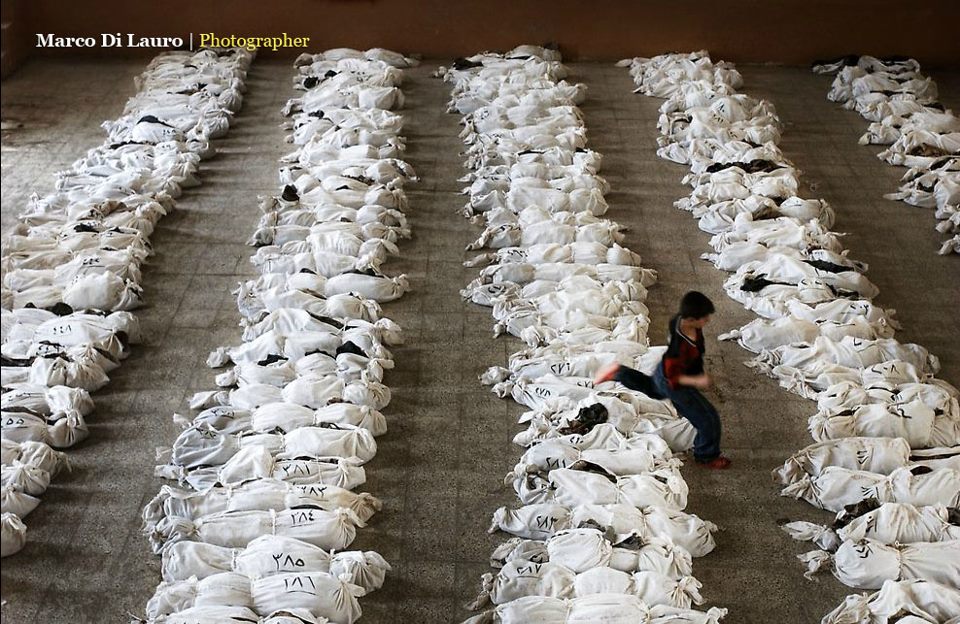“With a tenuous peace settling over Syria, a former White House official says it would take powerful video images blasted on cable news of regime-orchestrated brutality to draw in the U.S. military. Barry Pavel, a former National Security Council and Pentagon official, tells DOTMIL via Twitter the U.S. “will act only if [a] ‘CNN event’” occurs.”
Unquestionably, the massacre at Houla is a horrific event. However, many questions should be raised regarding the event and its portrayal in the media. As the news first broke, the BBC posted a story along with the tragic image of a young boy running through a virtual field of body bags. The problem? This image was taken during the U.S. invasion of Iraq. The photographer who took the picture was quite vocal in calling out its misuse, and the image was soon removed.
And then there is the plausibility issue. While it would be hard to justify skepticism that the massacre did, indeed, occur—there are legitimate questions as to who perpetrated it. CNN was trying to frame this as an event orchestrated by the Syrian military; this is problematic. CNN (and Western journalists more broadly) readily point out that the Syrian forces are armed with heavy artillery and automatic weapons, while the rebels have only small-arms and not enough of them. Yet the story is apparently that a number of soldiers decided to, at great risk to themselves, enter a rebel-occupied town equipped with nothing but small-arms, knives, and axes to kill more than 100 people at close range, mostly civilian women and children. Moreover, they apparently managed to succeed in this without losing a single man: there are no regime soldiers identified among the dead.
We must also bear in mind that these soldiers would be attacking their fellow Syrians. While many in the Army may feel that fighting against the rebellion is a necessary evil they must commit for the good of Syria itself—it is unlikely that they would want to carry out something so personal as the execution of civilians, regardless of age. Throughout the conflict, as has been widely reported, the Syrian Army’s methods have utilized distance to their advantage: snipers, heavy artillery, etc.
The massacre at Houla seems more likely to have come from Sunni extremist groups from outside of Syria, an increasing reality in this conflict. This becomes even more likely if the victims of the massacre happen to be Alawites, Druze, Christians, Shii, some other minority sect; or government sympathizers (as this is a rebel-occupied town). Throughout the crisis in Syria, these considerations have been conveniently overlooked—all dead bodies have been lumped together and CNN has frequently emphasized the rebel’s casualty statistics (as opposed to the official government statistics or those provided by the UN). These projections have been made without asking the obvious questions: “Who is in these body bags? How did they die?” The implication is always that these were protestors killed by government forces.
Russia has stated that the Houla events are unclear. While they often take this posture, more for political reasons than epistemological rigor, they are certainly correct in this case. One thing is clear: the news media, activists, and various members of the international community are using this event to try to pressure the United States into intervening in Syria more directly, as the U.N. has already stated that it will not.
